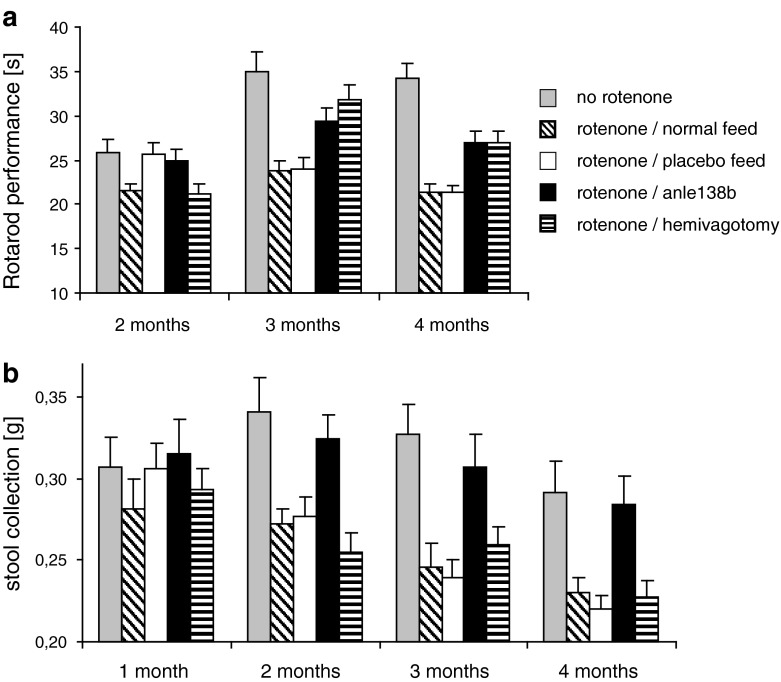Fig. 7.
Effect of anle138b in animal models of Parkinson’s disease: low-dose intragastric rotenone model. a A significant decrease in motor performance (Rotarod) can be observed in rotenone-treated mice (normal feed and placebo feed) compared to the non rotenone-treated control group both after 3 (p < 0.01) and 4 (p < 0.001) months of rotenone treatment. This effect is ameliorated by treatment with anle138b. Both anle138b and hemivagotomized mice present a significantly improved motor performance after 3 (p < 0.01) and 4 months (p < 0.01) when compared to rotenone-treated (normal feed and placebo feed) mice. Interestingly, no significant differences (p > 0.20) could be observed between hemivagotomized or anle138b rotenone-treated mice at any time point, indicating an effect size of anle138b similar to the hemivagotomy which has recently been shown to partially block the spread of α-syn pathology from the enteric nervous system to the CNS [49]. b 1-h stool collection gut motility test. Decreases in stool deposition have been previously shown to correlate with the presence of α-syn pathology in the enteric nervous system as a result of rotenone treatment. Co-treatment with anle138b results in a complete rescue of enteric function. Whereas all rotenone-treated mice (including hemivagotomized mice) present significant alterations (p < 0.05) in stool deposition, anle138b-rotenone-treated mice show no significant difference in stool deposition when compared to controls. Error bars in (a, b) indicate standard error. For statistical analysis 2-way ANOVA with Bonferroni post hoc test was used

